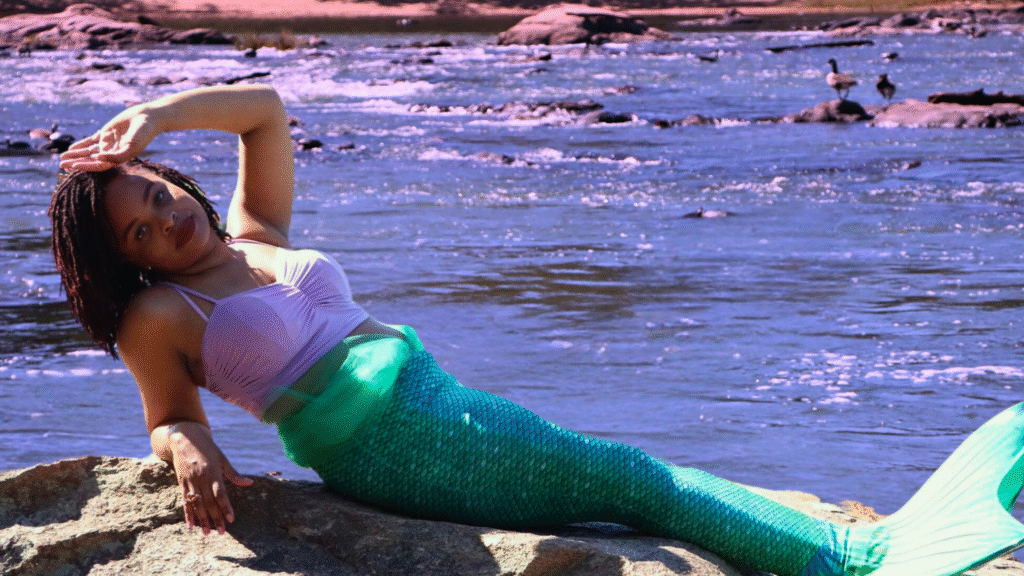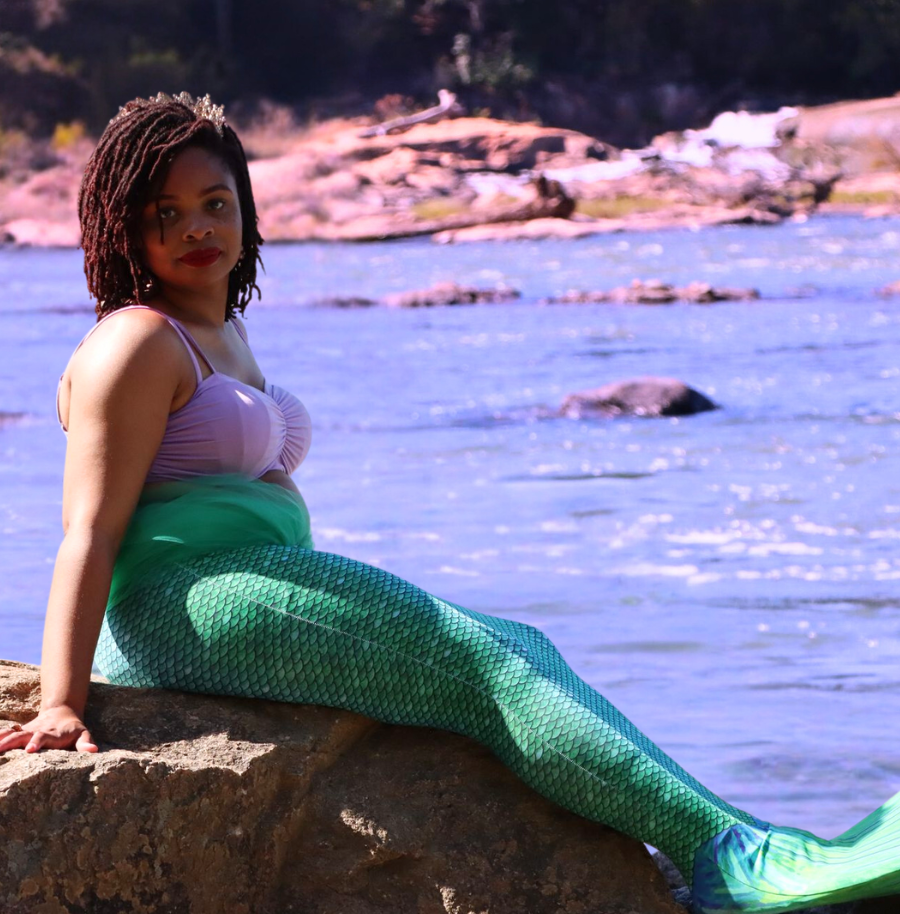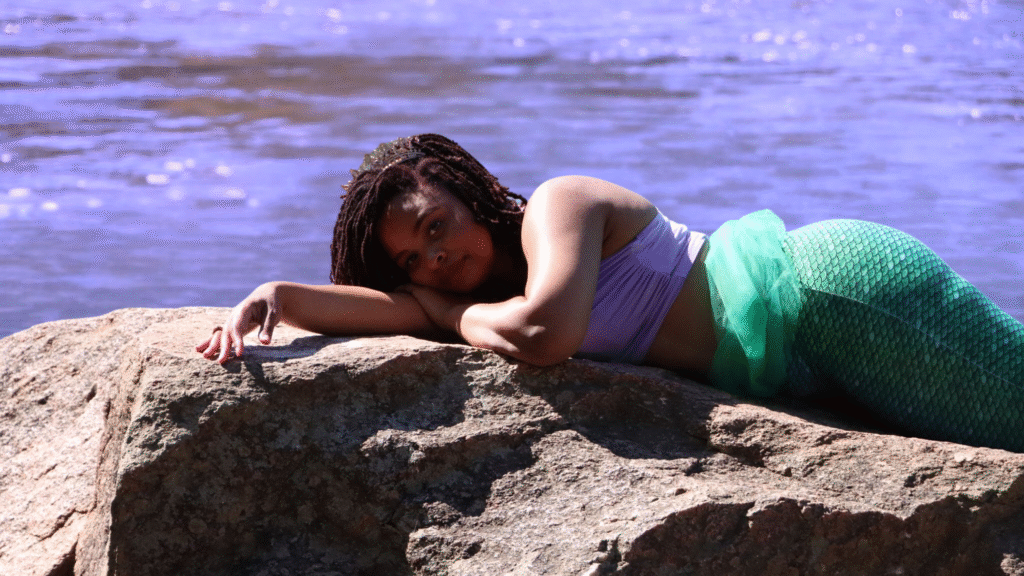
Why My Mermaid Is Black: Reclaiming Folklore Through Memory, Identity, and Creative Power

They say mermaids aren’t real—but neither were the stories that excluded us.
When Disney cast Halle Bailey, a young Black woman, as Ariel in The Little Mermaid, the backlash was loud, swift, and revealing. Some called it unrealistic. Others cried cultural erasure. But what it truly exposed was this: the world still struggles to imagine Blackness in places it has long denied us—even in fiction, even in fantasy, even in fairytales.
But what if the real distortion isn’t that a mermaid was cast as Black—but that so many mermaid stories have been told without us?


Let’s consider the logic.
During the transatlantic slave trade, an estimated two million Africans perished during the Middle Passage. Thousands were cast overboard—drowned, discarded, made into ghosts beneath the sea. The Atlantic Ocean became both a graveyard and a memory bank. A place where the ancestors sank—but not in silence. Their spirits, their stories, their legacy—none of it vanished. The water remembered. It carried more than salt and sorrow. It carried transformation.
So if you ask me whether mermaids could be Black, I say: how could they not?
The ocean has held more Black bodies than any European throne. Our kin are in the current. Our memory is in the tide. And from that loss, we’ve imagined survival. From that death, we’ve conjured divinity. Mami Wata, Yemoja, and La Sirène—African water spirits and deities—have long predated European mermaid mythology. So before there was Disney, there was diaspora. And before there was Ariel, there were African women whose power was drawn from the deep.

This isn’t just about folklore—it’s about who gets to be included in the symbolic architecture of human meaning. Who gets to be innocent. Who gets to be magical. Who gets to be imagined.
Fantasy isn’t neutral. It shapes how generations learn identity, morality, and possibility. Bedtime stories pass down cultural values just as much as textbooks—sometimes more. And yet, for so long, Black children have consumed stories that erased them, distorted them, or excluded them entirely.
Watch: My Mermaid is Black: An Artistic Retrospective
That’s why the role of the Black creator today is so critical. It’s not just about visibility—it’s about authorship. We are not here to decorate someone else’s narrative. We are here to reframe the lens. To insert ourselves where we were written out. To disrupt the false neutrality of Western myth-making and correct the record with creativity, truth, and vision.
Every Black illustrator who draws a brown-skinned mermaid, every filmmaker who places our children in enchanted forests, every writer who dares to center us in magic—they are doing sacred work. They are not just producing art. They are restoring cultural memory.
Because representation isn’t about novelty. It’s about belonging.
We were never absent from the magic—we were edited out. And now, we’re editing ourselves back in. Not because it’s radical, but because it’s true. Because even in the stories that claim to be fiction, the absence of Blackness has never been accidental. And because we now have the tools—camera, code, canvas, and imagination—to build new worlds from the ruins of old ones.
So yes, my mermaid is Black. Because the sea remembers. And now, so do we.
Related Works on this topic
My Mermaid Is Black: Because the Water Knew Us First
Why Mermaids Can’t Be Black: Race, Representation, and the Power of Reimagining Identity


